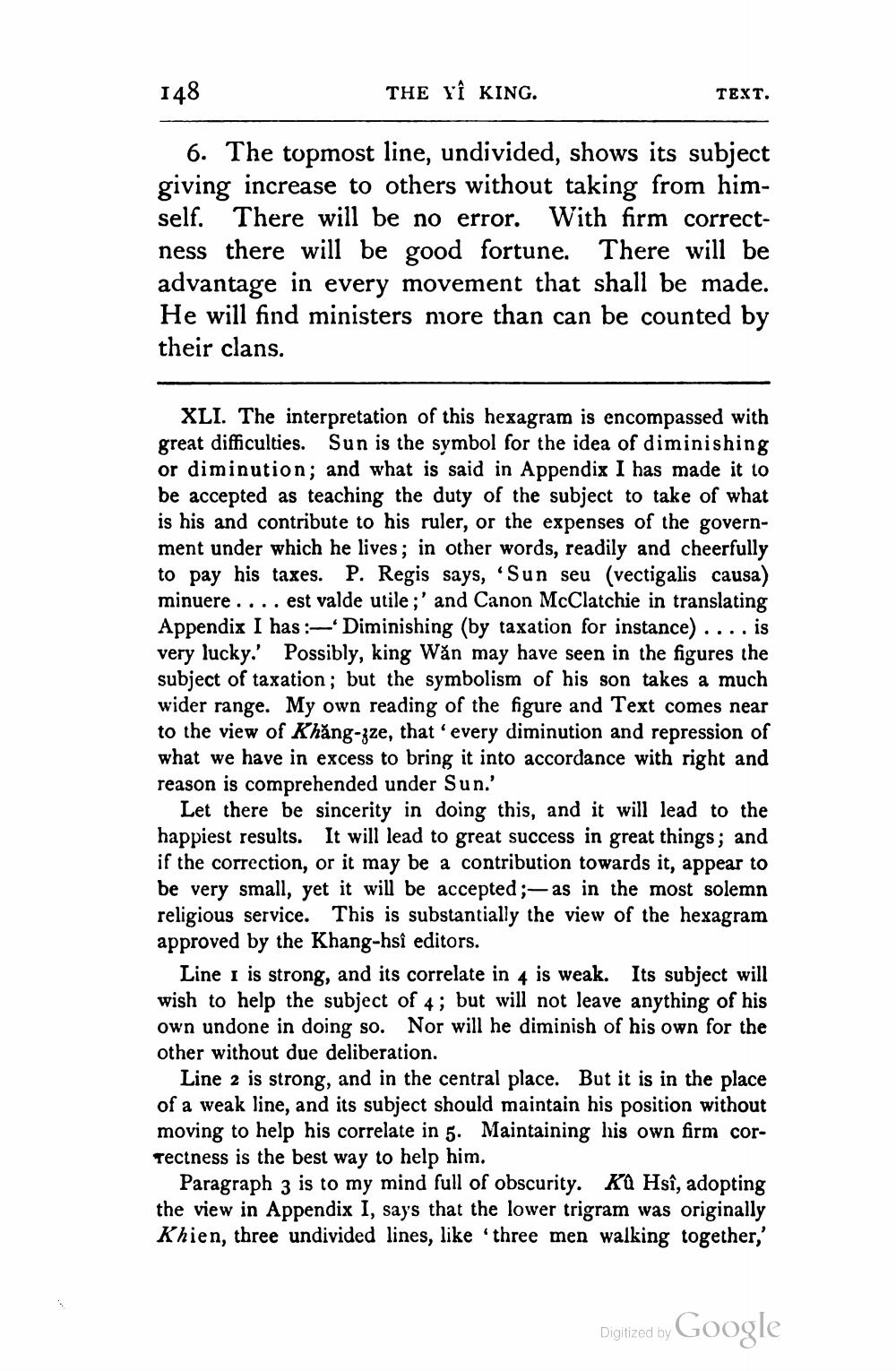________________
148
THE YÎ KING.
Text.
6. The topmost line, undivided, shows its subject giving increase to others without taking from himself. There will be no error. With firm correctness there will be good fortune. There will be advantage in every movement that shall be made. He will find ministers more than can be counted by their clans.
XLI. The interpretation of this hexagram is encompassed with great difficulties. Sun is the symbol for the idea of diminishing or diminution; and what is said in Appendix I has made it to be accepted as teaching the duty of the subject to take of what is his and contribute to his ruler, or the expenses of the government under which he lives; in other words, readily and cheerfully to pay his taxes. P. Regis says, "Sun seu (vectigalis causa) minuere.... est valde utile;' and Canon McClatchie in translating Appendix I has :- Diminishing (by taxation for instance) .... is very lucky. Possibly, king Wăn may have seen in the figures the subject of taxation; but the symbolism of his son takes a much wider range. My own reading of the figure and Text comes near to the view of Khăng-zze, that every diminution and repression of what we have in excess to bring it into accordance with right and reason is comprehended under Sun.'
Let there be sincerity in doing this, and it will lead to the happiest results. It will lead to great success in great things; and if the correction, or it may be a contribution towards it, appear to be very small, yet it will be accepted ;- as in the most solemn religious service. This is substantially the view of the hexagram approved by the Khang-hsi editors.
Line I is strong, and its correlate in 4 is weak. Its subject will wish to help the subject of 4; but will not leave anything of his own undone in doing so. Nor will he diminish of his own for the other without due deliberation.
Line 2 is strong, and in the central place. But it is in the place of a weak line, and its subject should maintain his position without moving to help his correlate in 5. Maintaining his own firm corTectness is the best way to help him.
Paragraph 3 is to my mind full of obscurity. KQ Hsî, adopting the view in Appendix I, says that the lower trigram was originally Khien, three undivided lines, like 'three men walking together,'
Digitized by Google




